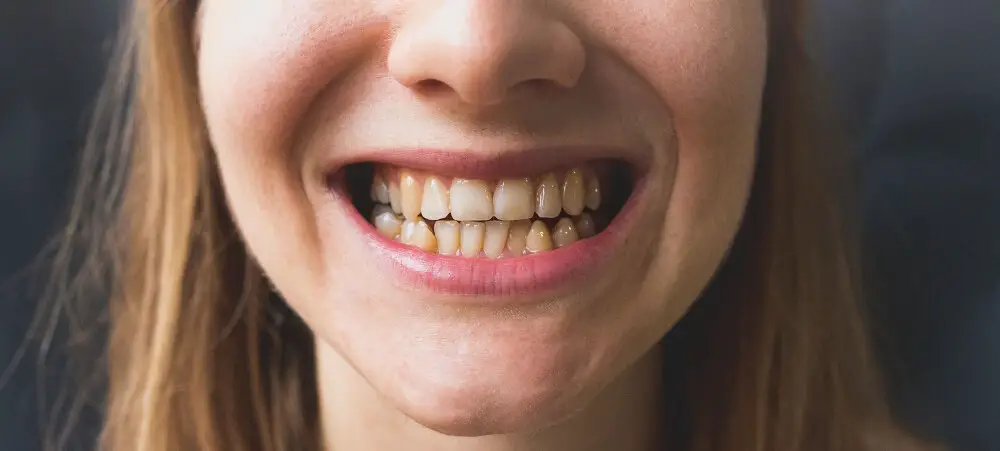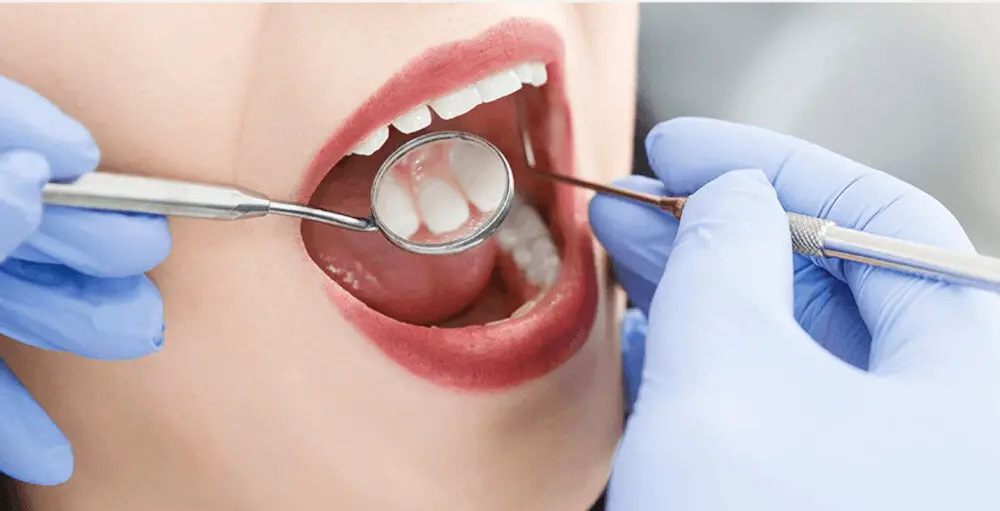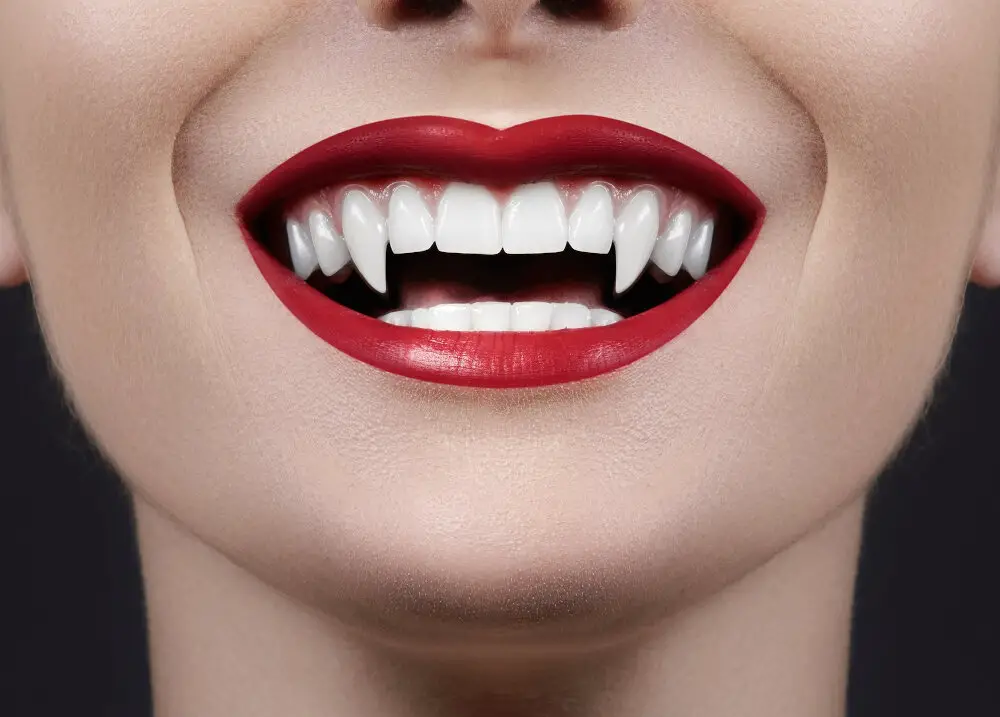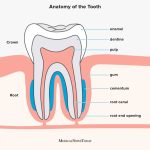Teeth at Risk: How Much Gum Recession is Too Much?

A beautiful smile can be a person’s best asset, but it’s not just about having straight and white teeth. The gums play an equally important role in the overall appearance and health of our teeth. The gum tissue acts as a protective barrier for our teeth and is responsible for holding them in place. However, if the gums start to recede, it can lead to a host of problems, including tooth sensitivity, gum disease, and even tooth loss. Therefore, it’s essential to understand how much gum recession is too much and what steps can be taken to prevent it. Gum recession is a common dental problem that affects people of all ages. It occurs when the gum tissue surrounding the teeth pulls back, exposing more of the tooth or the tooth’s root. Several factors can contribute to gum recession, such as poor oral hygiene, aggressive brushing, gum disease, and genetics. While some degree of gum recession is normal as we age, it’s essential to know when it becomes a cause for concern. In this article, we’ll explore how much gum recession is too much, the signs and symptoms to look out for, and what you can do to prevent it.
Gum recession occurs when the gum tissue that surrounds and supports the teeth pulls back, exposing more of the tooth or even its root. This can be caused by a variety of factors, including aggressive brushing, gum disease, genetics, and even hormonal changes. As the gums recede, the underlying tooth structure becomes more vulnerable to decay and damage, which can ultimately lead to tooth loss if left untreated. In some cases, gum recession may be accompanied by sensitivity, discomfort, or an uneven gum line, which can have a significant impact on the appearance and health of your smile. If you suspect that you may be experiencing gum recession, it is essential to seek the advice of a dental professional who can evaluate your condition and recommend appropriate treatment options to help restore your oral health and protect your teeth for years to come.
Maintaining good gum health is crucial for overall oral health. The gums play a significant role in supporting and protecting the teeth, as they form a protective barrier around the tooth roots and jawbone. When gums are healthy, they fit snugly around the teeth, preventing bacteria from entering the surrounding tissue. However, when gum health is compromised, the gums can begin to recede, exposing the tooth roots and leaving them vulnerable to decay and infection. Additionally, unhealthy gums can lead to bad breath and even contribute to systemic health issues such as heart disease. Therefore, it is essential to practice proper oral hygiene, including regular brushing and flossing, and to visit a dentist regularly to ensure that gum disease is caught and treated in its early stages.
What Causes Gum Recession?

Gum recession is a common dental problem where the gums around the teeth pull back, exposing the roots of the teeth. This condition can lead to tooth sensitivity, decay, and even tooth loss. There are several factors that can cause gum recession, including aggressive brushing, periodontal disease, genetics, hormonal changes, and tobacco use. Brushing too hard or using a hard-bristled toothbrush can wear away the gum tissue and cause recession. Periodontal disease, also known as gum disease, is a bacterial infection that damages the gums and can lead to recession and tooth loss. Genetics can also play a role in gum recession, as some people may have thinner gum tissue that is more prone to recession. Hormonal changes during puberty, pregnancy, and menopause can also increase the risk of gum recession. Finally, tobacco use, whether smoking or chewing, can cause the gums to recede and increase the risk of gum disease. There are several symptoms of gum recession, including tooth sensitivity, visible roots of the teeth, longer-looking teeth, and a notch at the gumline. If you notice any of these symptoms, it’s important to see a dentist as soon as possible. They can evaluate the extent of the recession and recommend appropriate treatment. Treatment options may include deep cleaning, gum grafting, or even surgery in severe cases. In addition to seeking professional treatment, taking steps to prevent gum recession can also be helpful. This includes practicing good oral hygiene, using a soft-bristled toothbrush, and avoiding tobacco use. By taking care of your gums, you can help protect your teeth and maintain a healthy smile.
Brushing too hard can lead to a multitude of problems for your teeth and gums. Aggressive brushing can cause the enamel to wear down, making teeth more sensitive and prone to cavities. It can also cause the gum line to recede, exposing the delicate roots of the teeth, which can lead to pain and even tooth loss. Gum recession can also create pockets between the teeth and gums, which can trap bacteria and lead to periodontal disease. It is important to brush your teeth twice a day with a soft-bristled brush, using gentle circular motions to avoid causing damage. If you are unsure if you are brushing too hard, consult with your dentist or dental hygienist for advice on proper brushing techniques.
Gum disease, also known as periodontal disease, is a condition that affects the tissues surrounding and supporting the teeth. It is caused by bacteria in plaque, which can build up on teeth and cause inflammation of the gums. If left untreated, gum disease can lead to severe damage to the gums, bones, and other structures supporting the teeth, which can eventually result in tooth loss. Symptoms of gum disease include red, swollen, or bleeding gums, bad breath, and receding gums. It is essential to maintain good oral hygiene, including regular brushing and flossing, to prevent gum disease. If you notice any signs of gum disease, it is crucial to seek treatment from a dental professional as soon as possible.
Genetics plays a significant role in the development of gum recession. Studies have shown that certain genetic variations increase the risk of developing periodontal diseases, which can lead to gum recession. Additionally, individuals with a family history of gum disease are more likely to experience gum recession. These genetic factors can affect the immune system’s response to bacteria in the mouth, leading to inflammation and damage to the gums. While genetics cannot be changed, it is important for individuals with a family history of gum disease to take extra care of their oral hygiene and regularly visit their dentist to prevent and manage gum recession.
Tobacco use is a major risk factor for gum recession. Smoking and using other tobacco products can cause a decrease in blood flow to the gums, which can lead to gum recession. In addition, tobacco use can weaken the immune system, making it more difficult for the body to fight off infections in the gums. This can lead to further damage and recession of the gums. It is important for individuals who use tobacco products to be aware of the risks to their oral health and to take steps to quit or reduce their tobacco use. By quitting smoking or other tobacco products, individuals can improve their overall oral health and reduce their risk of developing gum recession and other oral health problems.
Hormonal changes can play a significant role in gum recession. During puberty, pregnancy, and menopause, the body undergoes hormonal fluctuations that can cause an increase in blood circulation to the gums. This increased blood flow can cause the gums to become more sensitive, leading to inflammation and swelling. Additionally, the hormones can affect the way the body responds to bacteria in the mouth, making it easier for bacteria to cause gum disease. It is important to be aware of these hormonal changes and to maintain good oral hygiene habits to prevent gum recession and other oral health issues.
How Much Gum Recession is Too Much?

Gum recession is a common dental problem that affects many individuals. It occurs when the gum tissue that surrounds and supports teeth pulls back, exposing more of the tooth or its roots. While some gum recession is normal, too much gum recession can be problematic and increase the risk of tooth decay, tooth loss, and other dental problems. The severity of gum recession is typically measured by how much the gums have receded from their original position. In general, if the gums have receded more than 3 millimeters, it is considered too much and requires treatment. It is important to note that gum recession is a gradual process that may take years to develop. Therefore, it is essential to practice good oral hygiene habits, such as brushing twice a day, flossing daily, and visiting the dentist regularly. These habits can help prevent gum disease and slow down the progression of gum recession. Additionally, if you notice any signs of gum recession, such as sensitivity, pain, or bleeding, it is essential to seek dental attention promptly. Your dentist can assess the extent of gum recession and recommend the best treatment options to restore your oral health and prevent further damage.
A dentist plays a critical role in determining the severity of gum recession. With their expertise, they can assess the extent of gum recession and determine the underlying cause. They not only evaluate the visible damage but also use advanced diagnostic tools to identify any underlying bone loss that may have occurred. Based on the assessment, the dentist can provide appropriate treatment options to prevent further progression of the condition. Early detection and intervention can help to mitigate the damage caused by gum recession and restore the health of the affected teeth. Therefore, it is essential to visit a dentist regularly for routine check-ups and address any oral health concerns promptly.
Recession and economic downturns can have a severe impact on oral health. The financial strain can lead individuals to neglect their oral hygiene, skip routine dental appointments, and opt for cheaper, less effective dental care. This can ultimately result in gum recession, a condition where the gum line pulls back, exposing the tooth roots and increasing the risk of decay and tooth loss. Furthermore, stress and anxiety caused by financial instability can also contribute to teeth grinding and jaw clenching, which can further exacerbate gum recession. Therefore, it is crucial to prioritize oral health during economic hardship and seek professional dental care to prevent and treat gum recession.
Tooth loss can be a devastating experience for individuals, leading to negative impacts on their quality of life. Gum recession is a significant risk factor for tooth loss, as it exposes the underlying tooth structure to harmful bacteria and abrasion. When gum recession reaches a certain level, it can cause the teeth to become loose, leading to eventual tooth loss. Factors such as genetics, poor oral hygiene, smoking, and age can all contribute to gum recession and increase the risk of tooth loss. It is important to address gum recession early on and take preventative measures to ensure that tooth loss does not occur.
Treatment Options for Gum Recession

Gum recession is a common dental problem that affects millions of people worldwide. This condition occurs when the gum tissue surrounding the teeth pulls back or wears away, exposing the tooth root. Gum recession can lead to tooth sensitivity, decay, and even tooth loss if left untreated. Fortunately, there are several treatment options available for gum recession. One of the most effective treatment options for gum recession is gum grafting. This procedure involves taking gum tissue from another part of the mouth or using a donor tissue to replace the lost gum tissue. Gum grafting can help to protect the exposed tooth root, reduce sensitivity, and improve the appearance of the smile. Other treatment options for gum recession include scaling and root planing, which involves deep cleaning of the teeth and gum line, and the use of antibiotics to control bacterial infections. In some cases, orthodontic treatment may be recommended to reposition the teeth and improve the alignment of the bite, which can help to reduce the risk of gum recession. Regular dental check-ups and professional cleanings are also essential for maintaining healthy gums and preventing gum recession.
Scaling and root planing is a dental procedure that involves deep cleaning of the teeth and gums to treat gum disease. It is typically used when there is significant gum recession, which can expose the root of the tooth and lead to sensitivity, decay, and even tooth loss. The procedure involves removing tartar and bacteria from the surface of the teeth and below the gumline, as well as smoothing the root surface to help prevent further buildup. Scaling and root planing can be a highly effective treatment for gum disease, but it is important to catch the problem early and seek treatment promptly to prevent further damage to the teeth and gums.
Gum grafting is a procedure that involves taking tissue from one area of the mouth, typically the palate, and grafting it onto the area of the gums that has receded. This treatment is often necessary when there has been significant gum recession, which can lead to tooth sensitivity, tooth decay, and even tooth loss. Gum recession can occur due to a variety of factors, including gum disease, genetics, and aggressive brushing or flossing. Gum grafting can help to restore the gumline, protect the teeth from further damage, and improve the overall appearance of the smile. While it is a surgical procedure, gum grafting is typically well-tolerated and can provide long-lasting results.
Pinhole Surgical Technique is a minimally invasive procedure used to treat gum recession, a condition that causes the gum tissue to pull back and expose the tooth root. This technique involves creating a small pinhole in the gum tissue and gently manipulating it to cover the exposed root. A collagen strip is then placed under the gum tissue to hold it in place and promote healing. Unlike traditional gum grafting, which involves cutting and stitching the gum tissue, the Pinhole Surgical Technique is less painful, has a shorter recovery time, and produces excellent results. This technique is ideal for patients who have mild to moderate gum recession and want to restore the health and appearance of their smile.
Laser gum surgery is a minimally invasive procedure that is used to treat gum recession. This procedure involves the use of a laser to remove damaged or diseased gum tissue, which allows healthy tissue to grow back. The laser also seals blood vessels and nerve endings, which reduces bleeding and pain during and after the procedure. Laser gum surgery has many benefits over traditional gum surgery, including less discomfort, faster healing times, and better results. This procedure can help restore the health and appearance of your gums, and prevent further damage to your teeth and gums. If you are experiencing gum recession, talk to your dentist about whether laser gum surgery is right for you.
Prevention and Maintenance

Prevention and maintenance are crucial to maintaining healthy teeth and gums. Gum recession is a common dental issue that can lead to tooth sensitivity, root decay, and even tooth loss. To prevent gum recession, it’s important to maintain good oral hygiene habits such as brushing twice a day with fluoride toothpaste and flossing daily to remove plaque and food particles from between teeth and below the gum line. Additionally, regular dental check-ups and cleanings can help detect and prevent gum recession before it becomes a serious issue. Avoiding tobacco products and maintaining a healthy diet can also contribute to healthy gums and teeth. In addition to prevention, maintenance is also key in managing gum recession. For those with mild to moderate gum recession, non-surgical treatments such as scaling and root planing may be recommended. This involves removing plaque and tartar from below the gum line and smoothing the root surfaces to promote gum reattachment and prevent further recession. In some cases, surgical treatments such as gum grafting may be necessary to restore gum tissue and cover exposed tooth roots. Regardless of the treatment option, maintaining good oral hygiene habits and attending regular dental check-ups are essential in preventing and managing gum recession.
Proper brushing and flossing techniques are essential to maintain healthy gums and teeth. Brushing twice a day with a soft-bristled toothbrush and fluoride toothpaste is recommended. The toothbrush should be held at a 45-degree angle towards the gum line, and gentle circular motions should be used to clean the teeth and gums. Flossing should also be done daily to remove plaque and food particles from between the teeth. The floss should be gently inserted between each tooth and scraped along the sides to remove any buildup. Neglecting these habits can lead to gum recession, which is the loss of gum tissue around the teeth, exposing the root surface and making teeth more vulnerable to decay and sensitivity. Therefore, it is crucial to follow the correct brushing and flossing techniques to prevent gum recession and maintain optimal oral health.
Regular dental checkups are essential for maintaining good oral health, especially when it comes to gum recession. Gum recession occurs when the gum tissue around the teeth wears away, exposing the roots of the teeth and increasing the risk of tooth decay and other dental problems. During a dental checkup, a dentist can examine the gums for signs of recession and provide treatment options to prevent further damage. Early detection is key in treating gum recession, so it’s important to schedule routine checkups every six months to keep your teeth and gums as healthy as possible. Additionally, practicing good oral hygiene habits at home, such as brushing twice a day and flossing daily, can also help prevent gum recession and other dental issues.
Avoiding tobacco use is crucial in maintaining healthy gums and overall oral health. Tobacco use, whether it be smoking or chewing tobacco, can cause significant damage to the gums and teeth. Tobacco use is a leading cause of gum disease, which can lead to gum recession and even tooth loss. Additionally, tobacco use can cause staining of the teeth and bad breath. Quitting tobacco use can be challenging, but there are many resources available to help individuals quit. By avoiding tobacco use, individuals can protect their gums and teeth and improve their overall health and well-being.
Maintaining a healthy diet and lifestyle is crucial not only for overall health but also for maintaining good oral health and preventing gum recession. A diet rich in vitamins, minerals, and antioxidants can strengthen the immune system and promote healthy gums. On the other hand, a diet high in sugar and processed foods can increase the risk of gum disease and recession. Regular exercise can also improve blood flow and promote healthy gums. It is important to avoid smoking or using tobacco products, as they can damage the gums and increase the risk of gum disease. Overall, a healthy lifestyle can not only improve your overall health but also promote healthy gums and prevent gum recession.
In the article \Teeth at Risk: How Much Gum Recession is Too Much\, the author explores the various causes, symptoms, and treatments of gum recession. Gum recession can be caused by a variety of factors, including genetics, brushing too hard, gum disease, and aging. The symptoms of gum recession include tooth sensitivity, exposed tooth roots, and bleeding gums. Treatment options include scaling and root planing, gum grafting, and dental bonding. It is important to address gum recession promptly, as it can lead to tooth loss and other dental issues. Regular dental check-ups and proper oral hygiene can help prevent gum recession and maintain overall dental health.
Early detection and treatment of gum recession is crucial for maintaining good oral health. Gum recession occurs when the gums start to pull away from the teeth, exposing the sensitive root surface. This condition can lead to tooth sensitivity, decay, and even tooth loss. Therefore, it is important to identify the signs of gum recession early on, such as tooth sensitivity, redness, and swelling of the gums. Treatment options include scaling and root planing, gum grafting, and the use of antibiotics. By seeking early treatment, individuals can prevent further damage to their teeth and gums, and maintain a healthy and beautiful smile.
Conclusion

In conclusion, gum recession is a serious oral health issue that can lead to various dental problems if left untreated. It’s important to be aware of the signs and symptoms of gum recession and to seek professional help if you notice any changes in your gums. Maintaining good oral hygiene practices, such as brushing and flossing regularly, can also help prevent gum recession. It’s essential to take care of your teeth and gums to avoid any further damage and maintain a healthy and beautiful smile. Remember, prevention is always better than cure, and early intervention can save you from the pain and discomfort of advanced gum disease.






